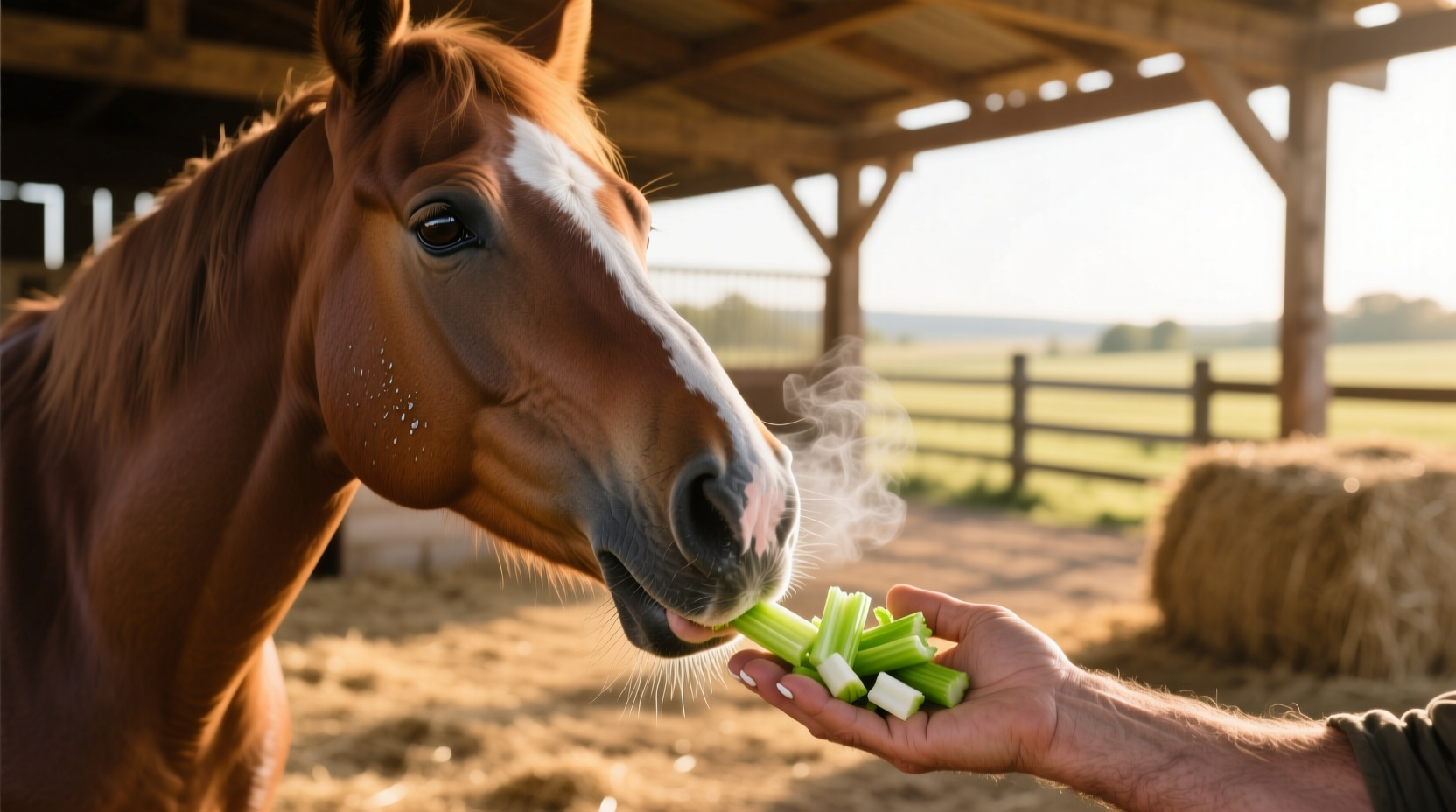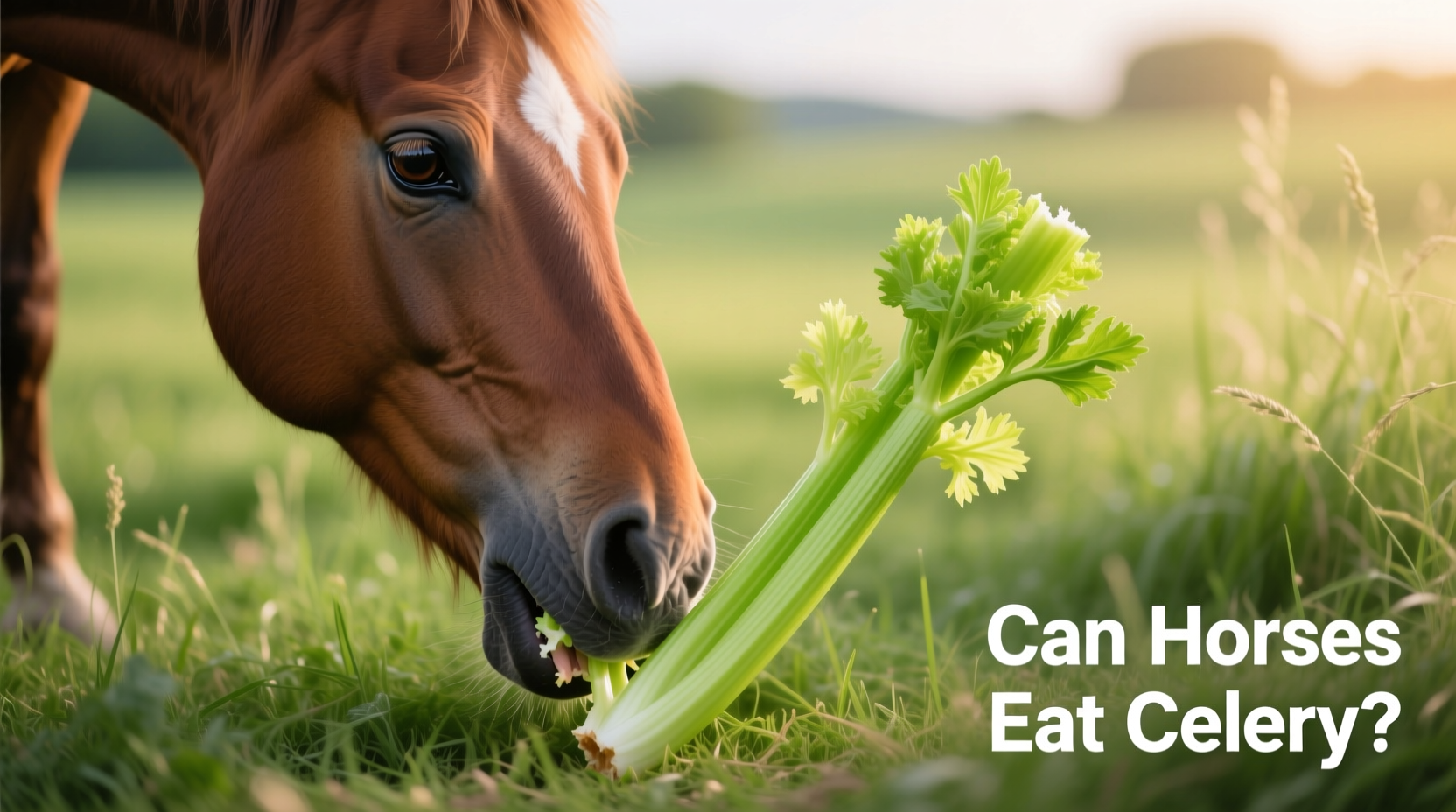As horse owners constantly seek healthy treat alternatives, celery has emerged as a popular option. But is this common kitchen vegetable truly safe for equine consumption? This comprehensive guide delivers evidence-based answers from veterinary nutrition experts, helping you make informed decisions about incorporating celery into your horse's diet.
Understanding Celery's Nutritional Value for Horses
Celery offers several nutritional benefits that align well with equine dietary needs. Unlike many commercial horse treats loaded with sugar, celery provides essential nutrients without excessive calories. The University of Minnesota Extension notes that horses require diverse forage sources to maintain optimal digestive health, and appropriate vegetable supplementation can contribute to this diversity.
According to equine nutrition research published in the Journal of Animal Science, horses process fibrous vegetables differently than humans. Their hindgut fermentation system allows them to extract nutrients from fibrous plant material that would pass through human digestion undigested. This biological adaptation makes certain vegetables like celery suitable as occasional treats when properly prepared.
| Nutrient | Celery (per 100g) | Carrot (per 100g) | Apple (per 100g) |
|---|---|---|---|
| Water Content | 95.4g | 88.3g | 85.6g |
| Sugar | 1.7g | 4.7g | 10.4g |
| Dietary Fiber | 1.6g | 2.8g | 2.4g |
| Calcium | 40mg | 33mg | 6mg |
This nutritional comparison shows why celery stands out as a superior treat option for horses with metabolic concerns. The American Association of Equine Practitioners (AAEP) recommends low-sugar treats for horses with insulin resistance or a history of laminitis, making celery an excellent choice compared to higher-sugar alternatives like apples.
Health Benefits of Celery for Horses
Celery's high water content (95.4%) makes it particularly valuable during hot weather or after exercise when horses need additional hydration. The National Research Council's Nutrient Requirements of Horses emphasizes the importance of maintaining proper hydration levels for digestive health and temperature regulation.
The vitamin K content in celery supports blood clotting mechanisms, which is especially important for horses that may experience minor injuries during turnout. Additionally, the crunchy texture provides dental benefits by encouraging natural chewing motions that help maintain proper tooth wear.

Important Safety Considerations
While celery offers benefits, specific preparation methods are crucial for safety. The Cornell University College of Veterinary Medicine warns that long, stringy vegetables like celery pose significant choking hazards if not properly prepared. Always chop celery into 1-2 inch pieces to prevent esophageal obstruction.
Introduce celery gradually over 7-10 days, starting with just one stalk. Monitor for any signs of digestive upset, including changes in manure consistency or appetite. Horses with a history of colic or digestive sensitivities may require veterinary consultation before adding new foods to their diet.
Proper Feeding Guidelines
Follow these evidence-based recommendations for safe celery feeding:
- Quantity: Limit to 1-2 stalks per day for an average-sized horse
- Preparation: Thoroughly wash and chop into 1-2 inch pieces
- Frequency: Offer no more than 3-4 times weekly as part of treat rotation
- Introduction: Start with small amounts and monitor for 24 hours
- Storage: Keep refrigerated and use within 3-4 days of purchase
The Equine Nutrition Alliance recommends treating vegetables like celery as dietary supplements rather than primary nutrition sources. These should never exceed 5% of your horse's total daily intake. Remember that hay and pasture should constitute the majority of your horse's diet, with treats like celery serving only as occasional enrichment.
When to Avoid Feeding Celery
Certain health conditions warrant avoiding celery entirely. The American College of Veterinary Internal Medicine advises against feeding celery to horses with:
- History of recurrent colic episodes
- Diagnosed hyperkalemic periodic paralysis (HYPP)
- Severe dental issues affecting chewing ability
- Recent gastrointestinal surgery
Always consult your veterinarian before introducing new foods to horses with pre-existing health conditions. Individual dietary needs can vary significantly based on age, breed, activity level, and medical history.
Alternative Treat Options
If celery isn't suitable for your horse, consider these vet-approved alternatives:
- Pumpkin (cooked and seedless)
- Beet pulp (soaked)
- Melon rinds (seedless)
- Leafy greens like spinach or lettuce
Remember that any new food should be introduced gradually and in appropriate quantities. The University of California, Davis School of Veterinary Medicine emphasizes that dietary changes should occur slowly to allow the horse's microbiome to adapt.
Frequently Asked Questions
Here are answers to common questions about feeding celery to horses:











 浙公网安备
33010002000092号
浙公网安备
33010002000092号 浙B2-20120091-4
浙B2-20120091-4